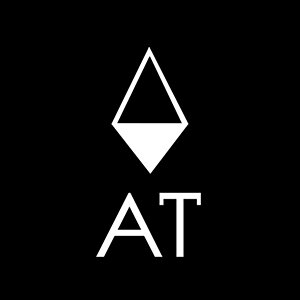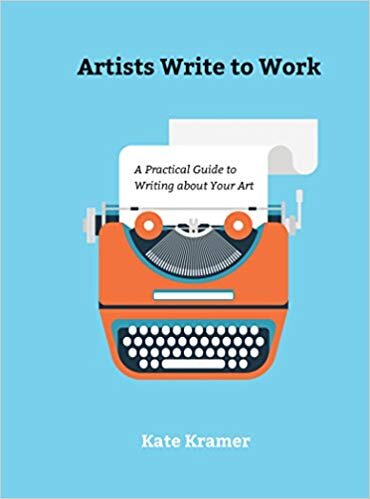The Perfect Proposal
Out On Your Own: Part II
Following up on my last entry about curating your own exhibitions, this guide will help you construct a strong exhibition proposal that will catch the eye of any gallerist, business owner or nonprofit director. Make sure you check back with my previous post about Getting Started for a list of what you’ll need before writing your proposal.
Proposal vs. Statement
It is important to distinguish between your artist statement and your exhibition proposal. While your artist statement will help you describe your work and craft your proposal, it can’t replace an exhibition proposal. As a reminder, your artist statement should cover the following topics in 2-4 paragraphs:
Why do you create your art and what does it means to you?
What are the techniques you use that make your work unique?
Why did you chose your specific medium or genre?
How does your art reflect your particular viewpoint?
How does it relate to historical or contemporary art movements?
The Statement is a general overview of your work and specific themes. The Proposal presents the details of the exhibition and describes what the viewer will experience.
Introduction
Similar to writing a cover letter for a job application, your proposal should begin with a mention of the venue or organization. Say something in regard to its specific features, reputation, location or history. Then explain why you believe your exhibition idea is a good fit for this space.
Description
From there, describe the appearance and theme of the exhibition. Talk about how the idea developed and what the works have in common. An evocative title is VERY helpful in getting your idea across. Consider using a subtitle that further explains the theme or content i.e. Underground: Clay Sculptures by Tom Little and Fay Wright
Throughout your proposal, make sure to answer the “why” question. Why do you want to show this particular work together or these particular artists? Asking yourself this question throughout the proposal is very important. Answering or attempting to answer the “why” shows the gallery that there is a clear connection between your work and the gallery; between the artworks themselves; and, in the case of a group exhibition, the connection between the artists.
Include the list of artists involved with links to their websites. If there are notable connections between artists or impressive individual achievements, be sure to mention them. For example: “Both artists are Fulbright Scholars and have worked in Sub-Saharan Africa.”
Describe the materials used and any specific installation requirements, i.e. works suspended from the ceiling, video equipment, interactive elements, exceptionally large or heavy pieces, special lighting. Give the minimum size of the wall/floor area you’ll need. This could be a make or break item in your proposal.
Include any ideas for educational elements such as panel talks, family activities or workshops geared toward engaging the general public. This will save a step for venues that need to create programs around each exhibition.
Side bar: I loved the way that these artist curators Yaron Dotan and Christine Rasmussen found the title of their exhibition in a Wallace Stevens poem and applied it to the loneliness of the technological age. Click here to read the digital catalog which has excellent examples of the artists’ statements and bios.
List of works
The perfect proposal should include a partial (if not full) checklist of work to be included. The best way to format this is with a thumbnail image and the artwork details:
Artists Name, Title of Work, Media, Dimensions, Date Completed
When you don’t have images of every piece, provide at least 3-4 images per artist that represent work similar to what will be in the show. If any artists are represented by a gallery, make note that artists appear “courtesy of” their gallery.
If you’re submitting the proposal digitally, you may want to create a Dropbox folder of all the images and a Word document list of the artwork details. Be sure to number the images to match the image list.
And if you have presented the show at other venues, be sure to include installation shots of the work “in situ” or “in place”. With Photoshop or other programs you can create a virtual version of the display to show how the works look together.
Timeline
Propose a schedule if possible. Include installation dates; opening and closing dates; open hours; program dates. If you are replying to a call for exhibition proposal, leave the timeline more ambiguous but give an estimated time needed for installation and an ideal length of the exhibition. If work will be shipped, make note of delivery time and storage concerns.
Budget
This is the most often neglected item in a proposal as it is difficult to determine what your costs will be ahead of time. But it is crucial to understand what your financial commitment will be and how the venue will collaborate. If possible, find out in advance if there is a stipend available or if the venue covers certain costs.
In your budget be sure to include as applies:
Shipping
Framing
Installation Supplies
Equipment Rental
Art Handlers or Tech Support
Invitation/Poster Printing
Postage
Reception Food & Beverage
Catalog/Brochure Printing
Artist Honoraria
*If a budget is not required by the venue, create one for yourself anyway, or present it to the venue at a later date so that expectations are always managed.
Get feedback
Try to have an impartial party read your proposal and then ask them to explain the idea of the exhibition back to you. If they describe the same concept you have envisioned, then you know your proposal is ready for submission. If your theme is unclear, ask the reader where you can add more clarity.
Follow up
Much like a job interview, it is professional to follow up on your proposal submission. If the gallery does not give you a timeline for reviewing your proposal, wait at least two weeks. It’s best to be polite and patient, and email is better than phone calls. If the venue decides that it’s not the right fit, don’t be defensive, but ask for constructive feedback. This could help you hone-in on a more appropriate venue or fine-tune your proposal.
Resources
If writing about art is intimidating, here are a couple of titles to explore:
How to Write About Contemporary Art by Gilda Williams
Artists Write to Work: A Practical Guide to Writing about Your Art by Kate Kramer
Art-Write: The Writing Guide for Visual Artists by Vicki Krohn Amorose
Other helpful links:
Practice with this exercise sheet from Saskatchewan Craft Council
Ask a Curator (blog) Everything you need to know about exhibition proposals
How to Write About Your Art by Mary Edwards
YouTube panel discussion video from Seventh Gallery (52 min)
Good luck writing your proposal and Happy New Year 2020!





